An explanation of what I'm doing here can be found in my introduction post.
Last week's look at Tekken, NFL Gameday, Warhawk, and Primal Rage can be found here.
This week, we'll look at Criticom, Discworld, Destruction Derby, and Doom.
----------------------------------------------------------------------------------------------------
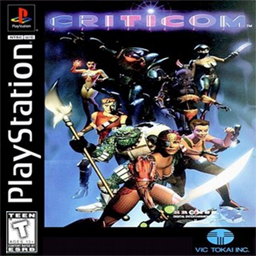
Criticom™
Release Date: 11/15/1995
Developer: Kronos Digital Entertainment
Publisher: Vic Tokai
Time to Utter Bafflement: 25 Minutes
I went into this game having no idea what it is. I'm pretty sure I had never heard of it before and I didn't even know it was a fighting game; the title seems like it should belong to some kind of shmup or rail shooter. I certainly didn't know that this thing is supposedly one of the worst 3D fighting games ever made. My ignorance of that evaporated almost immediately.
I'm going to say this thing got off to something that could be called a good start with its opening cutscene. The sequence is overly long, has way too much messy lore for a fighting game, bad 90's CG, and bizarre narration. It was silly enough that I was willing to give this game a chance. On top of that, there's a short intro scene when you select a character that gives a little explanation as to what their deal is; I can see how having a story set-up could help with context when seeing the endings for those characters. That last sentence is a joke because no one in their right mind will see any of the character endings.
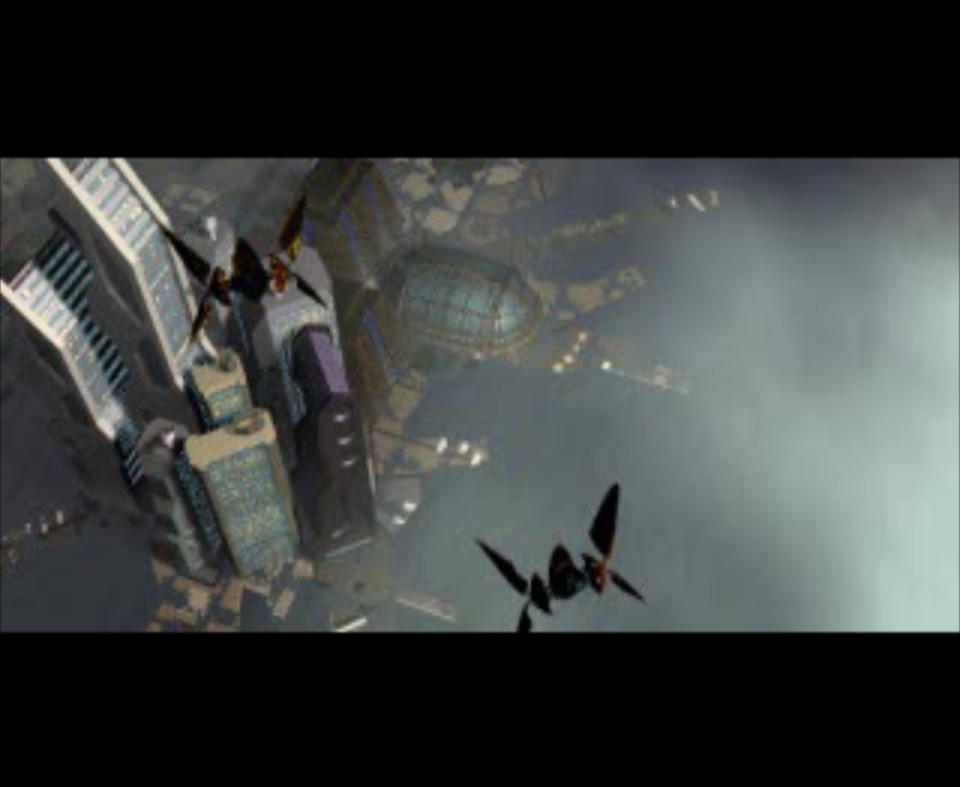
The most immediate and glaring issue anyone playing this will encounter is the fact that fighting against the AI is impossible. I never made it past the first fight in my entire experience, and I never even got close. The AI in the first fight of the ladder is able to block almost every hit, breaks whatever strategy you could use, can't be pushed off the edge of the arena, and is exceptionally hard to spam. On top of that, it feels like the damage you can do to the AI is less than the damage done to you with the same attacks. Finally, there doesn't seem to be a way for you to quick recover when being knocked down, but the AI will always do it.
There does seem to be some kind of levelling system for each of the characters, so maybe the AI is balanced for a fully upgraded character and not a base level character. That wouldn't be a great excuse, since you're generally supposed to scale difficulty for player level. This is all exacerbated by the overall sluggish feel of the combat. It feels kinda like Toshinden except this game has a run mechanic. Also, there doesn't seem to be much in the way of special moves or any other notable combos that can be used. Just an all-around stinker of a fighting game.
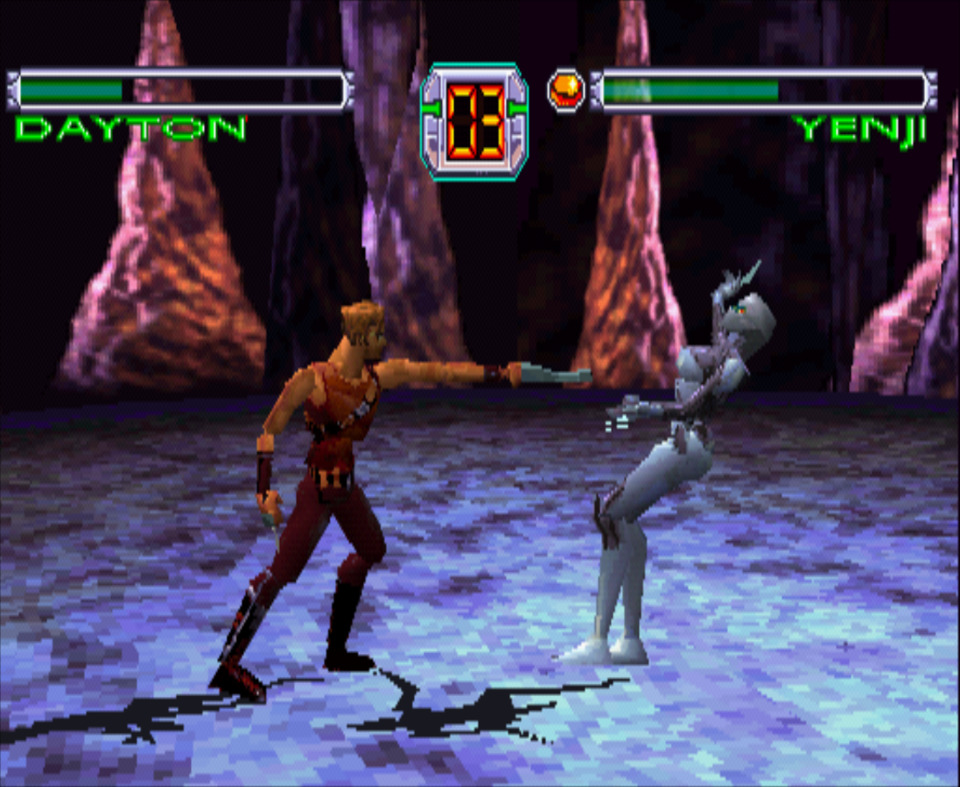
It's a bit of a bummer, because there are a couple of interesting things going on here. The fights are run on a single round where each fighter has two health bars. This theoretically gives the rounds a different kind of flow than most other fighting games of the time. Also, even though the lore Is dumb it is still more coherent than other contemporary fighting games. There is the germ of something here, but that seed is covered in poisonous spikes and probably isn't worth extracting.
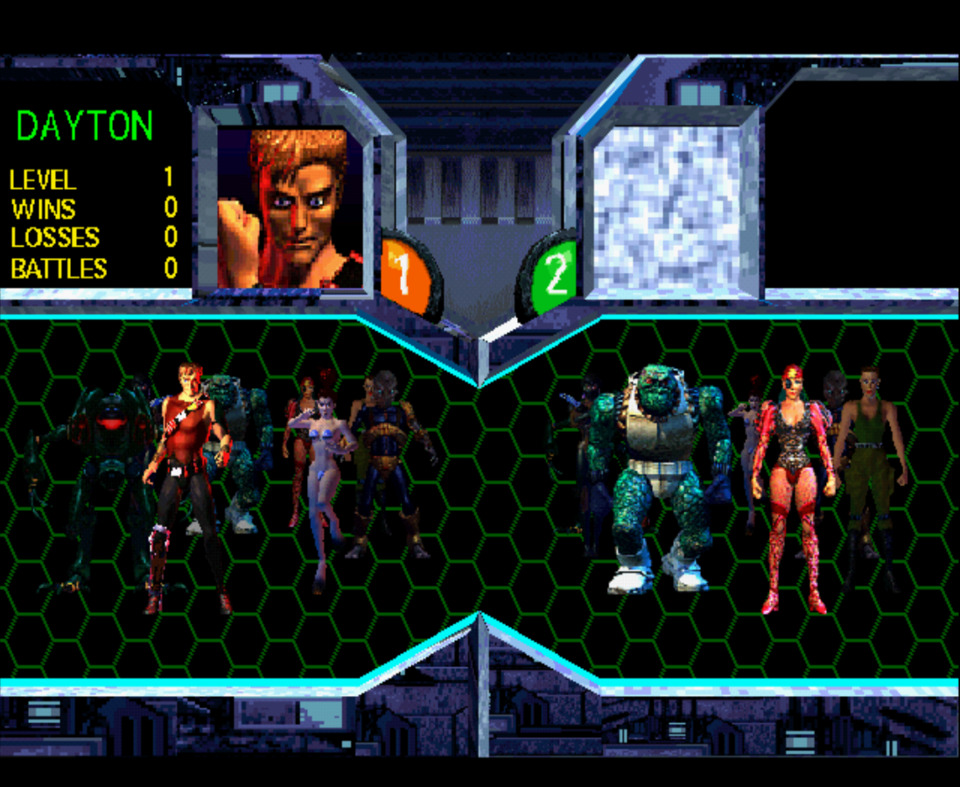
The story of the development of this game is probably more interesting than the game itself. Apparently, Kronos was originally working on a licensed IP for Sony, but that license ended up being taken away from them and handed off to some other studio. The team decided to stay together and reuse the tech they had been working on to make an original IP. They shopped themselves around to different publishers and Vic Tokai, of all places, picked them up. It looks like Vic Tokai was trying to get literally any game on store shelves for the North American launch season, so Kronos was given around 4 or 5 months to turn their tech into a game. It turns out fighting games are really fast to develop if you don't care about balance or quality. So, I guess I can see how someone could have left the block percentage in the AI an order of magnitude too high by accident The punchline here is that Kronos would go on to bring Fear Effect into existence, so this is a cursed studio from beginning to end.
----------------------------------------------------------------------------------------------------
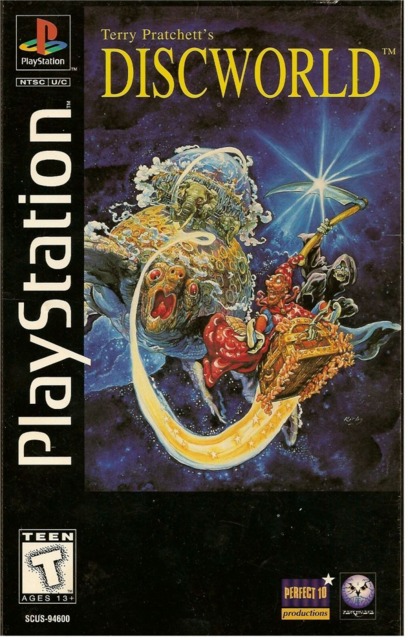
Discworld
Release Date: 11/15/1995
Developer: Perfect Entertainment
Publisher: Psygnosis
Time to Soft-Locking The Game: 5 Minutes
Time to Realizing I Soft-Locked The Game: 30 Minutes
Time to Soft-Locking Again After Restarting The Game: 60 Minutes
I need to get something out into the open first thing: I couldn't give less of a shit about discworld as a setting or franchise. I did not grow up reading Terry Pratchett. In fact, I didn't even know who Terry Pratchett was until I was full grown adult. I read his first two discworld novels not that long ago and I thought they were just ok. The goofy wit and skewering of fantasy tropes is kinda fun, but I just can't find it in myself to get invested. That could be due to the fact that I've always been much more of a sci-fi nerd than a fantasy dork. So, my way of "getting" Terry Pratchett's style and appeal is to think of him as being the fantasy version of Douglas Adams. That being said, Discworld the game is a mid-90's adventure game that feels like an early-90's adventure game, which could be a good or bad thing depending on your point of view.
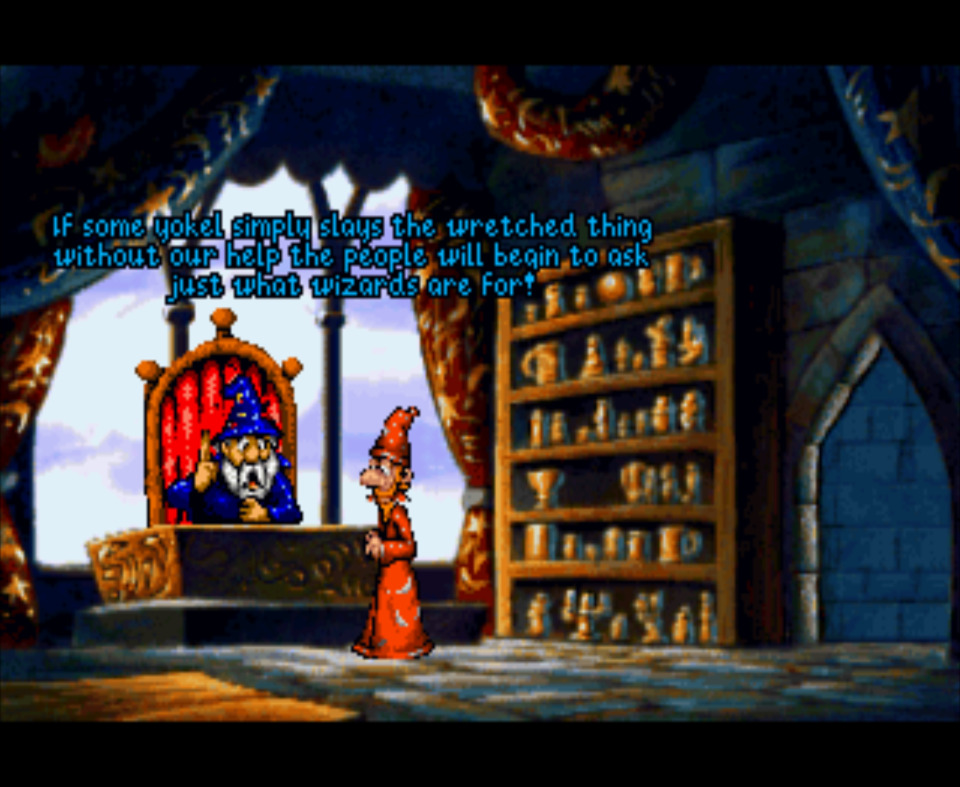
I'm just going to run through my experience and let that stand for itself. The game starts with some dragon attacks in the city and the wizards at Unseen University want to get in on the hunt for the perpetrating creature. Even though the wizard in charge cares, he doesn't care that much. Thus, everyone's favorite failed mage Rincewind is called upon to look into it on behalf of the university. The first interactable screen of the game is Rincewind's bedroom where the first objective is to get to the Chancellor's office. I made the mistake of poking around the room first and picking up a non-descript pouch. My cursor turned into that pouch and every time I tried to interact with anything or talk to another character the game thought I was trying to use the pouch, which of course I couldn't do. This soft-locked the game. I did not realize that I had soft-locked the game until I had wandered around the starting area for half an hour looking for the Chancellor's office. When I got there and tried to talk to him, I finally recognized my fatal error and I had to restart the game.
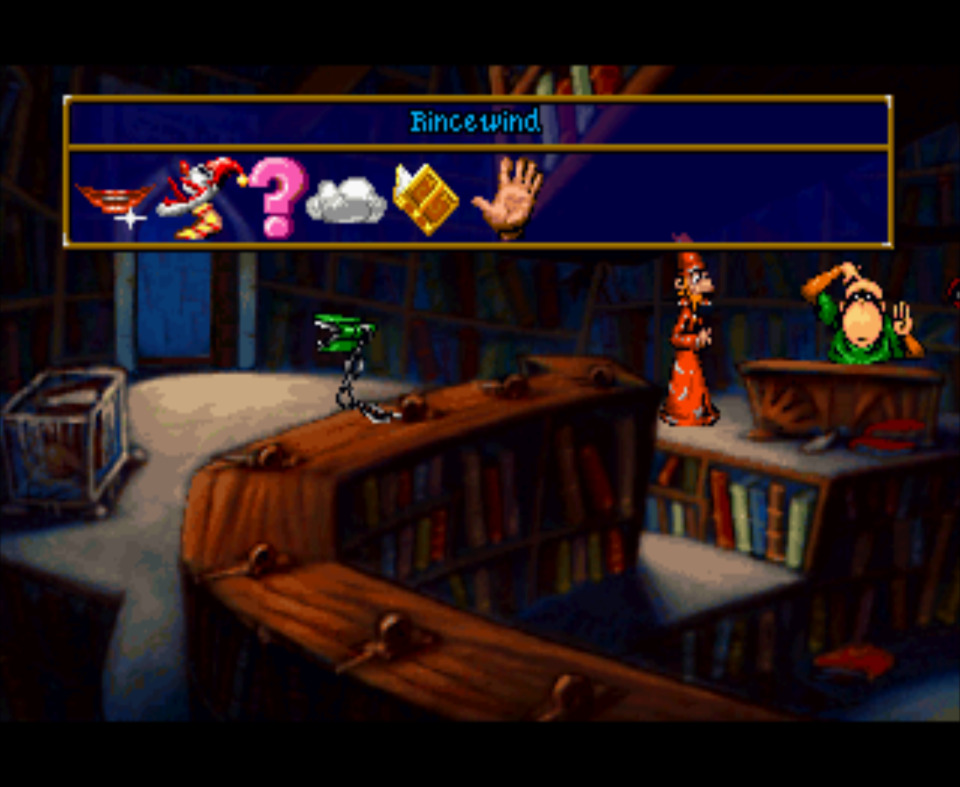
After charging my way through the opening scenes and dialogue, I made a bee-line for the Chancellor and picked things up from there. After talking to him, I needed to get a book from the library on how to deal with dragons. When I got to the library I noticed a few objects that are probably relevant for later puzzles and the fact that the librarian is an ape. There's some fun jokes around that, but it also means that Rincewind can't actually check out a library book. I then wandered over to the dining hall and had some incredibly drawn out conversations with the old wizards there. After that didn't go anywhere I got the broom from the hall closet and used it to poke the Luggage awake back in Rincewind's room. With the luggage awake and following me around I now had access to an inventory screen that already came with a banana. I deduced that that was the solution to the librarian puzzle, but I also had the really bright idea to pick that pouch up and put it in my inventory for later. Friends, the pouch cannot be put into the inventory. In my naïve assumptions based on modern design standards, I had soft-locked the game for a second time. I was at around the hour mark by then, so I quit and I do not intend to revisit this game.
And that really is too bad, because some of the jokes are ok and Rincewind is voiced by Eric Idle, who is my favorite member of Monty Python. The art is whimsical, but less offensively so than I would have thought and the music is ok enough.
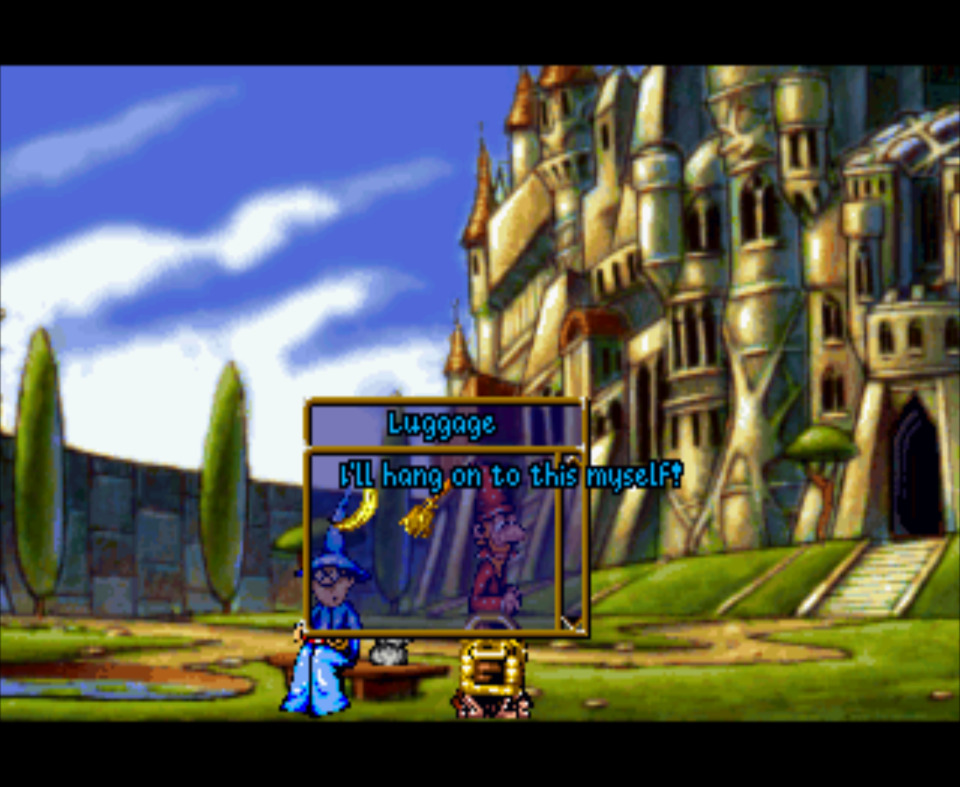
Now, as is customary, I must inform you that everything I've written can apply to any version of the game, which was originally released for DOS in 1994. I did not play the original version, I played the goddamned PS1 version. This thing runs like absolute dogshit, requires a load between every scene transition, hitches up with any and every animation, and misses a few beats in loading up lines of dialogue in each conversation, thus ruining the timing for most of the humor. On top of that, the game uses an onscreen cursor that is controlled by the d-pad for navigation. This is a horrendous way to play a point-and-click adventure game. I'm going to eventually sound like a broken record, but do not under any circumstances play the PS1 versions of mouse-based PC games. Don't do it. Just no.
Finally, I want to address the snarky line I had a the beginning about early- and mid-90's adventure games. I threw in that line because 1995 is the year that saw the releases of: Full Throttle, The Dig, Phantasmagoria, and the second Gabriel Knight game. Maybe I'm just a bit stuck up, but that is not an inspiring list of games and the fortunes of the major American adventure game studios was all downhill from there. You also started to see a move away from verb-object interactions to a more simplified interaction set-up that would be familiar in later adventure games. Also, starting in the late 90's there is the shift to Europe as the locus of development for the genre. Discworld is a game that mostly complies with the coming era of design but retains some of the design and aesthetic sensibilities of the fading era. This makes Discworld something of a novelty for its moment in time as much as a curiosity for the Terry Pratchett and Eric Idle connections. So, go ahead and track down the DOS version if you're interested in old adventure games, but under no circumstances should you even look at the PS1 version.
----------------------------------------------------------------------------------------------------
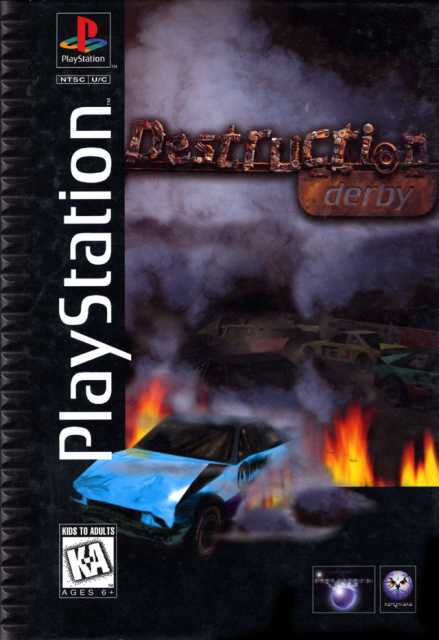
Destruction Derby
Release Date: 11/16/1995
Developer: Reflections Interactive
Publisher: Psygnosis
Time to Getting Wrecked: 50 Minutes
We now arrive at the second of the three big racing games of 1995, and the one to have the least longevity. That last point is odd because this game was one of the pillars of the pre-launch marketing blitz for the PS1 and it ended up being featured in several GOTY lists from that year. Maybe this game has more cache in Europe than North America; but because I've previously established that the rest of the world doesn't exist, I will classify this game as forgotten. So, is this a forgotten classic or was it forgotten for a reason? Hint: you already know the answer.
Anyone who has played Wreckfest would be able to recognize immediately what's going on in Destruction Derby. So much so that I would hazard to say that this is a direct progenitor of the Destruction Racing sub-genre. The game modes include: Wreckin' Racing, which is a tournament where you race around five short, self-crossing tracks in which you run into other cars and the walls until your engine dies and you lose; Stock Car Racing, where you race around those same tracks, but with a reduced emphasis on hitting things, until you get spun around by a back-marker and lose; and finally Destruction Derby, which is a free-for-all battle where you hit other cars and the walls until your engine dies and you lose. Hopefully you've noticed the pattern.
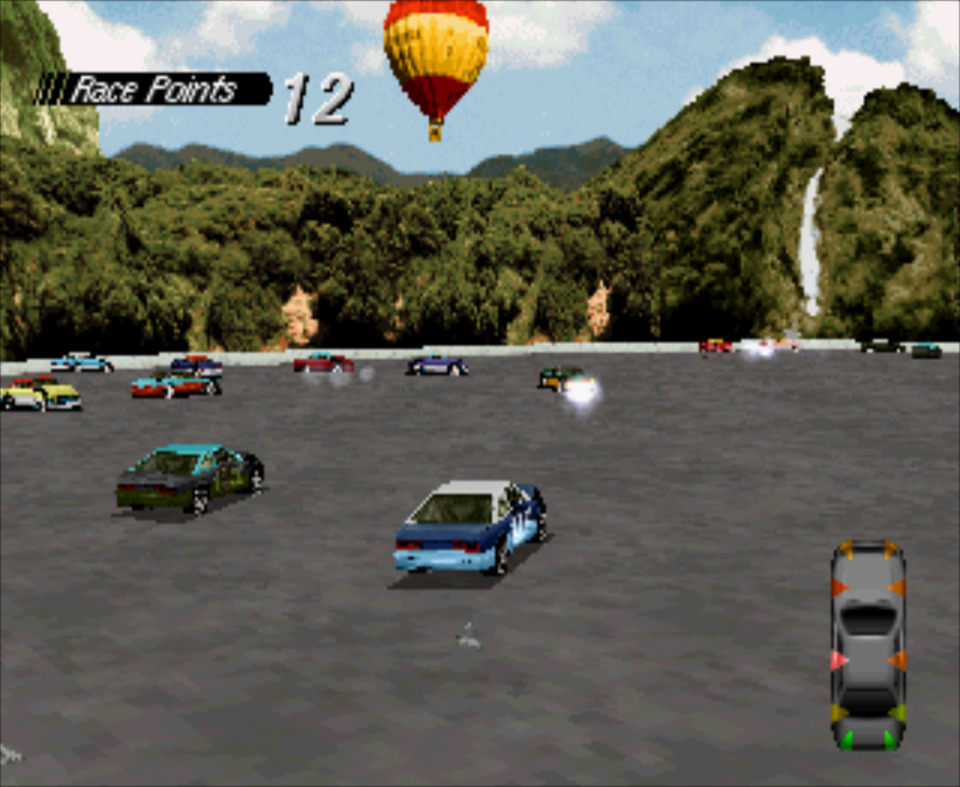
Even though the racing controls feel ok enough with the combination of d-pad and L1/R1 for tight turning, the game still manages to feel uncontrollable due to the large number of cars bouncing around in the relatively small spaces of the tracks. This is combined with a pretty punishing damage model on the car that will end your race if you hit too many other cars. That's where we hit upon the main issue that unspools the whole experience. You're scored in two of the modes on how much damage you can do to other cars in addition to final placement. So, while you don't necessarily have to finish first, you do need to be wreaking as much havoc as possible. That damage model directly counteracts the impetus to smash into things, which is a problem I'm sure could eventually get solved if I was a bored preteen. Though without any obvious strategies, I consistently ended up in literal ruination.
It's a shame that I had such a miserable time with this game. The large number of cars (usually 20-something) are not only on track but bouncing around with a custom physics engine and detailed damage models, which is really impressive for how early we are in the PS1's lifespan. This certainly is the most technically impressive PS1 game so far. That combined with the decent enough music and the variety of modes, which in addition to the aforementioned main modes also include time trials and practice races, means there's a lot more going on here than in most of these other launch window games. But, if I'm not having fun or getting anything else from the core experience then it doesn't matter how various the ways are that I can have that core experience.

After this game, I'm starting to dread the big name Playstation titles that I have coming up in the next few weeks. Having gone through the quadruple slaps-to-the-face of Twisted Metal, Tekken, Warhawk, and now Destruction Derby I'm now actively pessimistic about Wipeout next week. Which is a shame, because these big name releases were well considered at the time and are usually well remembered. This might be due to a bias towards the new and shiny and the self-justification of a pricey hardware purchase, like we've seen in many a console launch (In a slightly more recent example, Resistance: Fall of Man reviewed very well in 2006). It's just somewhat shocking to me the extent to which the mythos of the Playstation is built on bullshit.
----------------------------------------------------------------------------------------------------
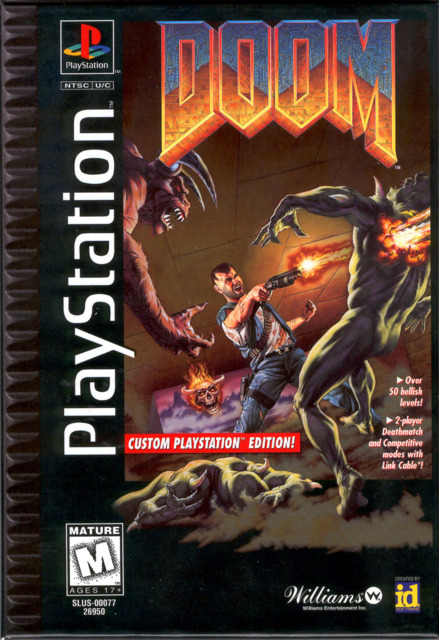
Doom
Release Date: 11/16/1995
Developer: Id Software
Publisher: Williams Entertainment
Time to Played Enough Doom: 90 Minutes
Now this is a proper fucking video game. I was worried that I wouldn't have enough to say about a Doom port for the PS1, but there's a little bit more going on here than I thought.
First, let's be clear: this is Doom. If you've played a first person shooter before, this is the granddaddy of them all. You shoot hell demons with a variety of guns across far future mars bases and hell itself. You can't look up or down and all of the enemies are 2D sprites in a 3D environment. Interestingly, this package also includes Doom 2, which is like the first doom except you're on a hell-infested Earth and there are some slight differences with enemies and guns. This port has some minor subtractions from the original games, such as the removal of Arch-viles, but also added colored lighting and animated skyboxes. This thing controls slightly better on a d-pad than I thought it would, and there is new music that is more atmospheric and creepy, though less cool, than the originals. I ended up playing this thing up until I felt silly for playing Doom on a d-pad when I have the keyboard version easily available.
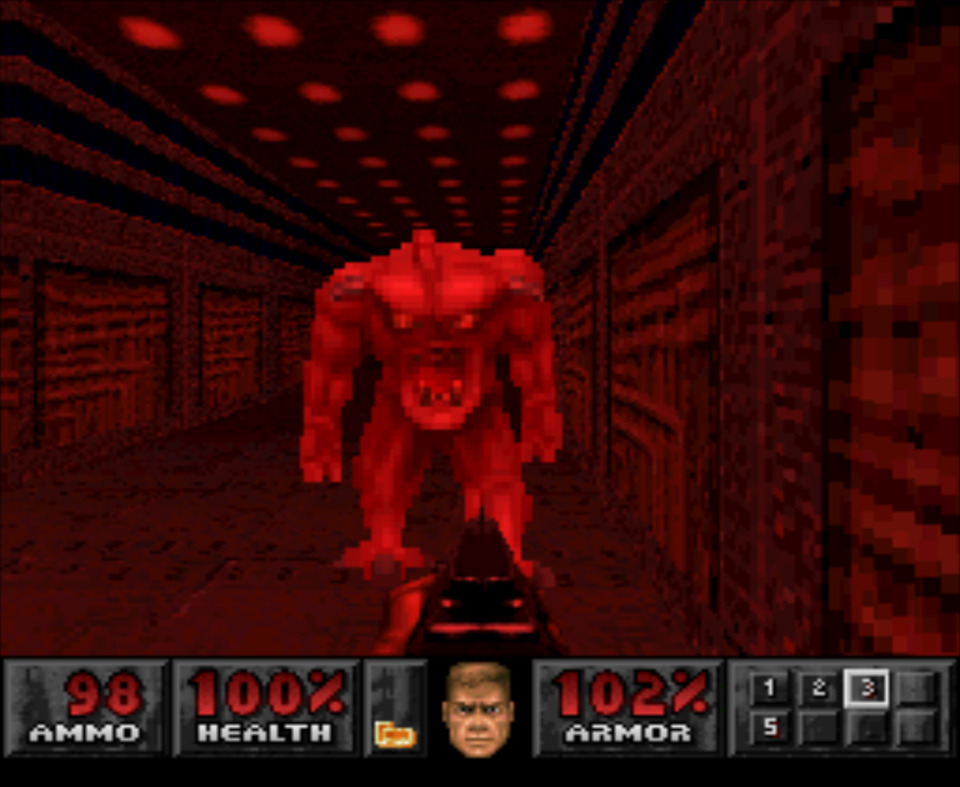
There is a bit of odd lineage for this port. This thing seems to have been initially based on the Atari Jaguar version of the game, which had 23 of the original 27 levels plus two unique levels. From that base, they added six additional levels unique to the PS1 and five levels from Ultimate Doom. On top of that the version of Doom II included in this package contains 23 of that original 30 levels. When you factor in some edits made to the included levels and the aforementioned changes, this chimera of a game is kind of its own thing entirely separate from any other version. The chopped up nature of this thing feels bizarre coming from a modern context where ports are just the as-is game moved over to another system. Williams apparently did this kind of thing for every 90's port of Doom, making each one its own unique Frankenstein's monster. I was tempted to try and untangle the whole lineage of Doom ports, but I need to reserve my sanity for next week. Maybe I'll try to put together a conspiracy board showing which levels are taken from or created for each version of Doom when I get bored enough.
----------------------------------------------------------------------------------------------------
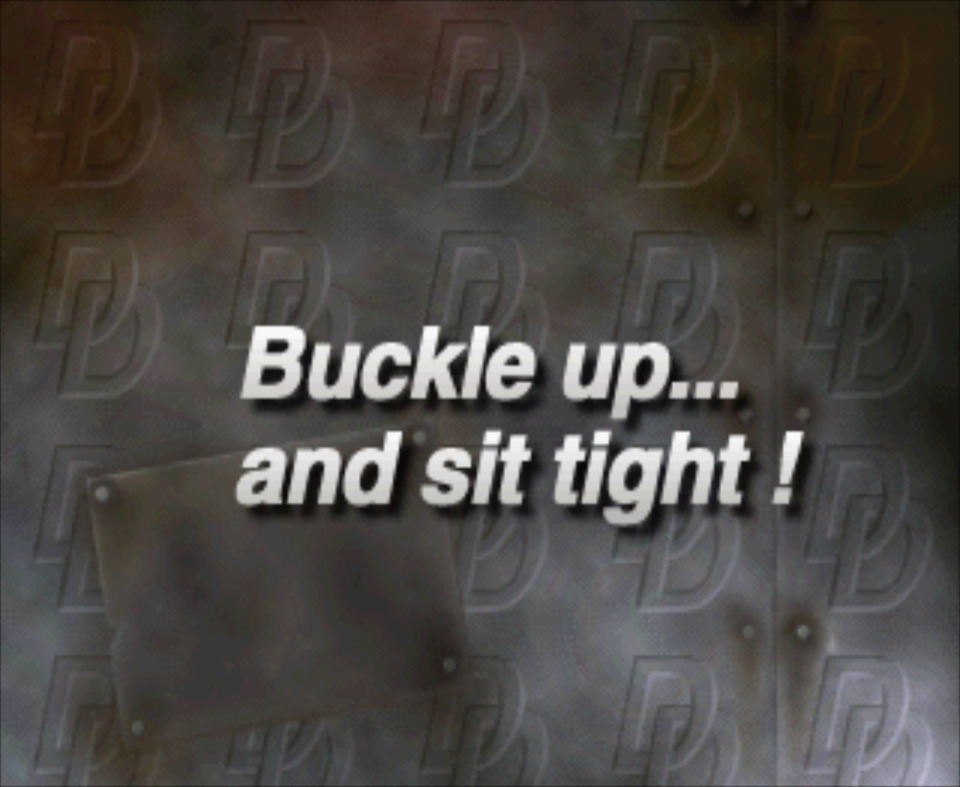
Next time we'll take a look at everyone's favorite killer of time: Zoop! Also Agile Warrior F-111X, Lemmings 3D, and some unknown little British game called WipEout.
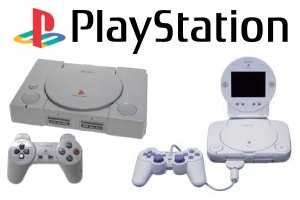
Log in to comment